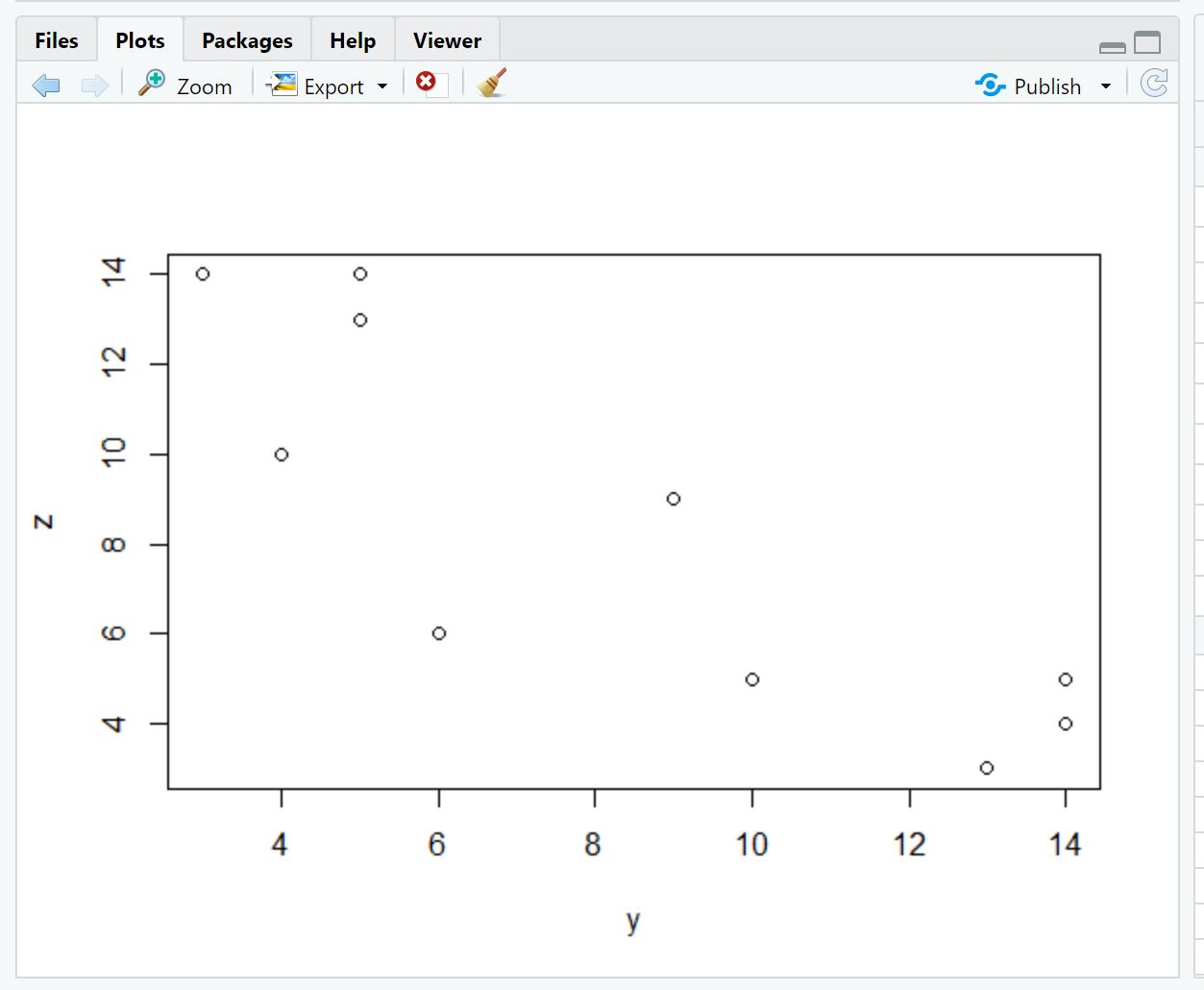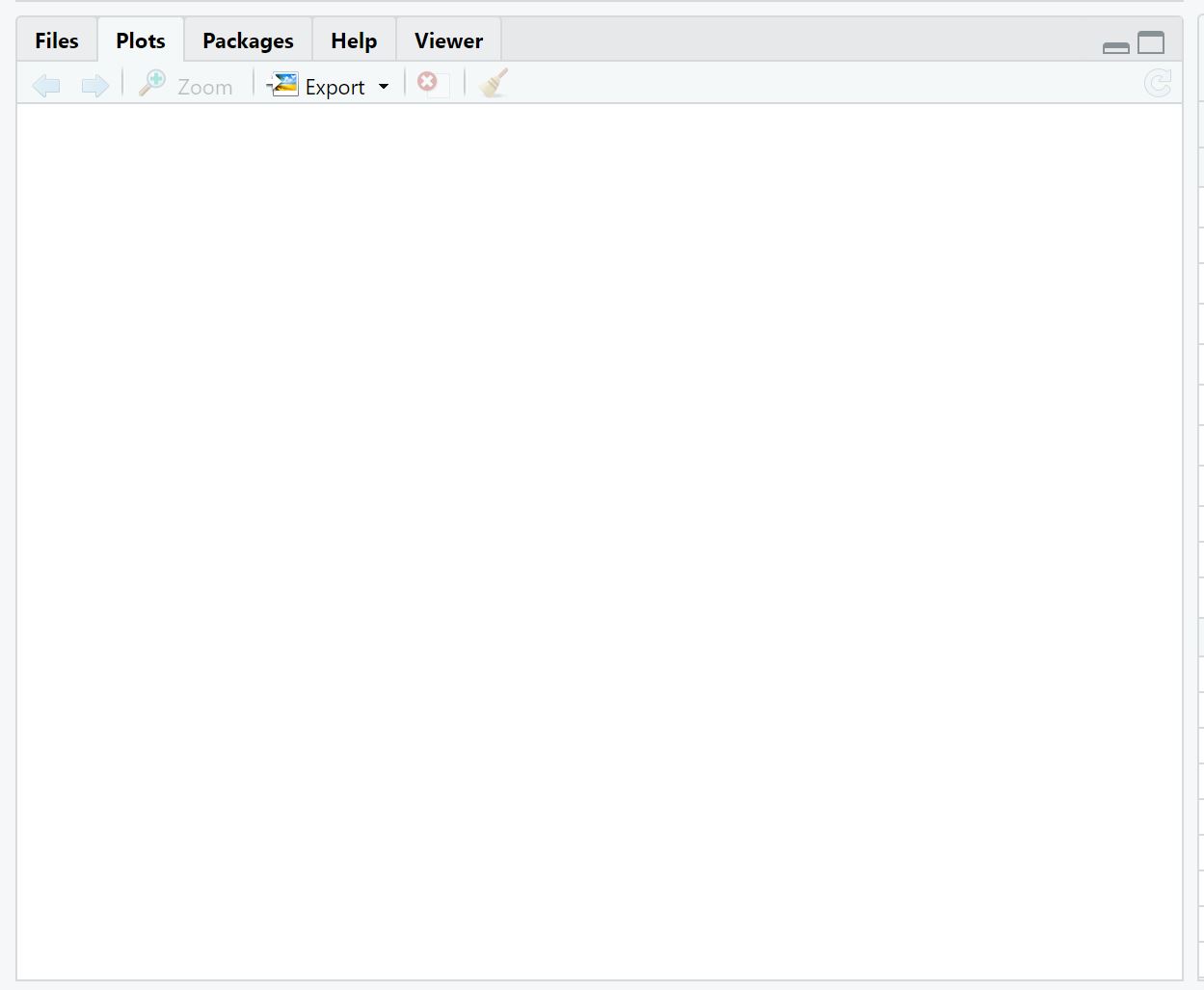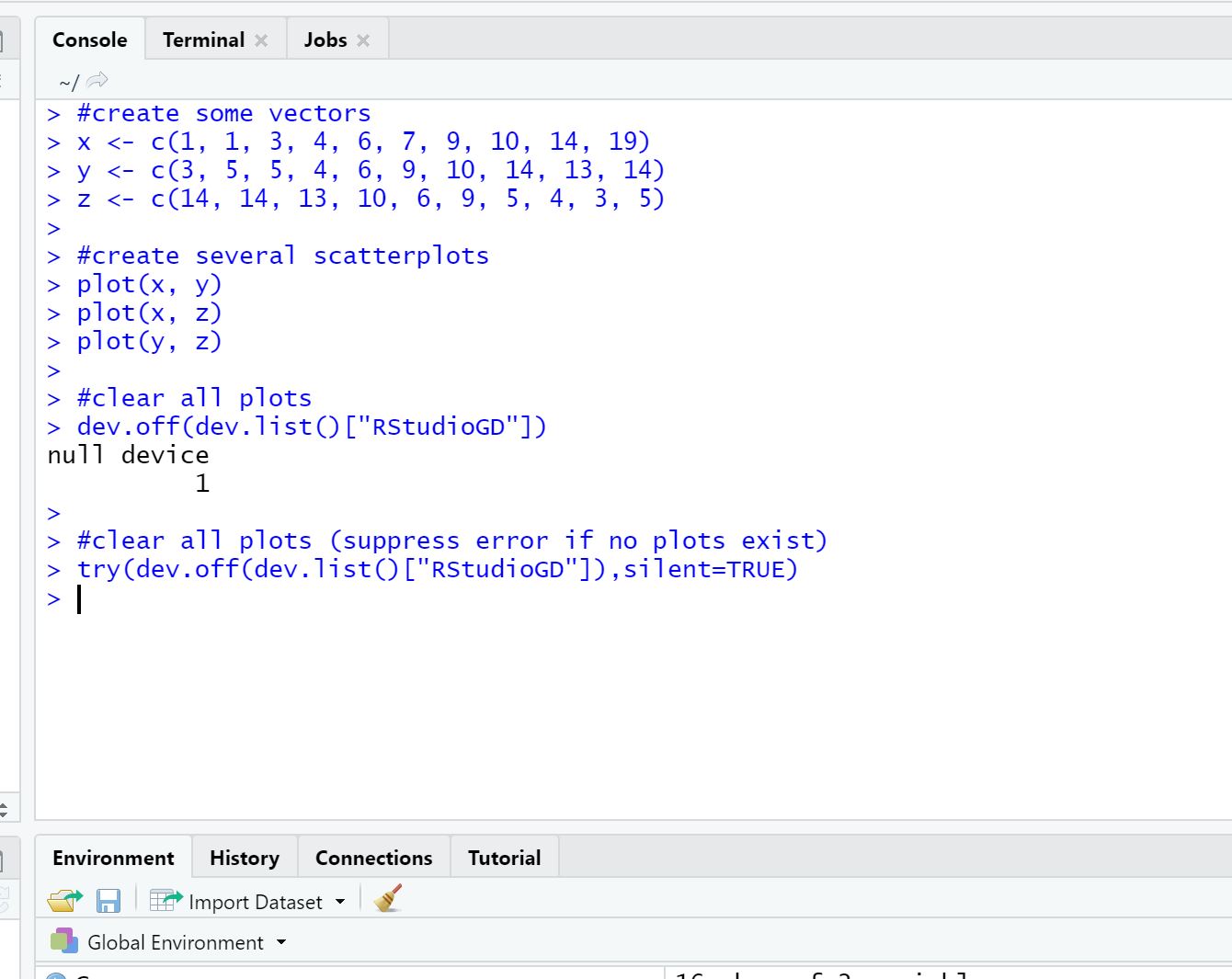Rstudio ですべてのプロットをクリアする方法 (例付き)
次の基本構文を使用して、RStudio のすべてのプロットをクリアできます。
dev. off ( dev.list ()[" RStudioGD "])
次の例は、この構文を実際に使用する方法を示しています。
例 1: RStudio ですべてのプロットをクリアする
次のコードを使用して、RStudio で 3 つの異なる点群を作成するとします。
#create some vectors x <- c(1, 1, 3, 4, 6, 7, 9, 10, 14, 19) y <- c(3, 5, 5, 4, 6, 9, 10, 14, 13, 14) z <- c(14, 14, 13, 10, 6, 9, 5, 4, 3, 5) #create several scatterplots plot(x, y) plot(x, z) plot(y, z)
RStudio プロット ウィンドウでこれらの点群をそれぞれ視覚化できます。

プロット ウィンドウの左上隅にある青い矢印を使用して、作成したさまざまなプロットをスクロールできます。
次に、次のコードを使用して、RStudio 環境からすべてのプロットをクリアします。
#clear all plots
dev. off ( dev.list ()[" RStudioGD "])
プロット ウィンドウにはすべてのプロットが表示されなくなります。

例 2: RStudio のすべてのプロットをクリアする (およびすべてのエラーを削除する)
RStudio にプロットがない場合にすべてのプロットをクリアしようとすると、エラーが発生します。
#attempt to clear all plots dev. off ( dev.list ()[" RStudioGD "]) Error in if (which == 1) stop("cannot shut down device 1 (the null device)"): argument is of length zeroan>))
ただし、 try()ステートメントを使用してこのエラーを抑制できます。
#attempt to clear all plots (suppress error if not plots exist) try(dev. off (dev. list ()[" RStudioGD "]), silent= TRUE )
このコードは、RStudio からすべてのプロットをクリアしようとします。プロットが存在しない場合でも、エラーは表示されません。

このコードをコンソール ウィンドウで実行すると、クリアするプロットがないにもかかわらず、エラーは表示されません。
追加リソース
次のチュートリアルでは、R で他の一般的なタスクを実行する方法について説明します。